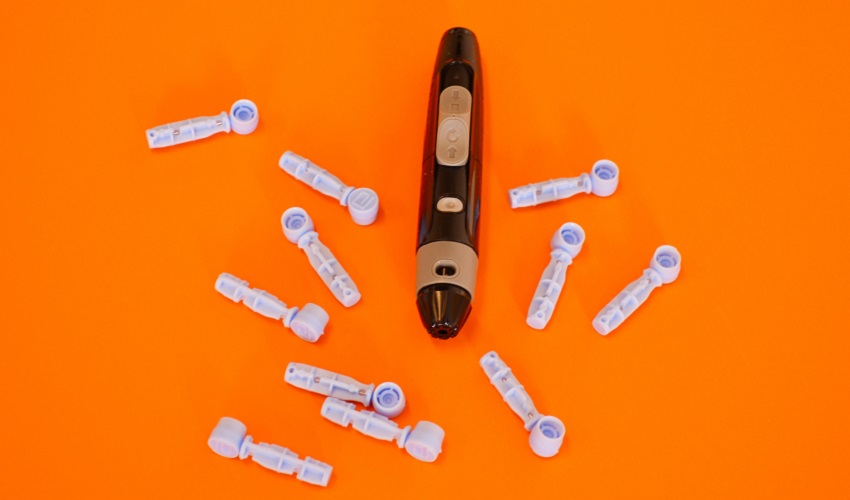Diabetes is a chronic metabolic disorder that affects millions of people worldwide. Among its different types, Type 2 diabetes is the most prevalent, and its incidence continues to rise at an alarming rate. While genetics and lifestyle factors play a crucial role in diabetes development, socioeconomic barriers are increasingly recognized as significant contributors. In this article, we will explore how socioeconomic factors impact diabetes prevention and management and discuss strategies to break these barriers, empowering individuals and communities in their fight against diabetes.
Understanding the Socioeconomic Impact on Diabetes
Diabetes imposes a significant burden on affected individuals and their families. Beyond the physical toll, the financial implications of diabetes management can be overwhelming, especially for those from low-income backgrounds. According to a study published in Diabetes Care, the estimated total cost of diagnosed diabetes in the United States in 2017 was $327 billion, including $237 billion in direct medical costs and $90 billion in reduced productivity.
The financial burden of diabetes can hinder access to essential medical care and healthy lifestyle resources. The impact on quality of life is profound, as individuals may struggle to afford medications, regular check-ups, and necessary supplies for proper diabetes management. Therefore, it becomes imperative to address the socioeconomic factors that exacerbate the burden of diabetes.
Socioeconomic Status and Diabetes Risk
Research consistently shows a strong association between socioeconomic status (SES) and the risk of developing Type 2 diabetes. Individuals with lower SES face heightened exposure to risk factors such as unhealthy diets, physical inactivity, and limited access to healthcare facilities. A study published in the American Journal of Public Health highlighted that those with lower income and educational attainment are more likely to develop diabetes than those with higher income and education levels.
The reasons behind this association are multifaceted. Lower-income individuals often live in neighborhoods with limited access to fresh and nutritious food options. The lack of safe recreational spaces and affordable fitness facilities can contribute to a sedentary lifestyle. Moreover, inadequate health literacy may hinder understanding of preventive measures and self-management techniques, leading to suboptimal diabetes control.
Identifying Socioeconomic Barriers to Diabetes Prevention
One of the primary challenges faced by individuals with low SES is limited access to healthcare services. Lack of health insurance, limited transportation options, and distance from medical facilities can hinder regular check-ups and early diagnosis. According to a study published in Health Services Research, adults experiencing food insecurity are more likely to have higher out-of-pocket medical expenditures, further exacerbating the financial burden.
To overcome this barrier, strengthening healthcare systems is crucial. Initiatives like community health centers, telemedicine services, and health fairs can help reach underserved populations, ensuring early diagnosis and effective diabetes management. Additionally, expanding Medicaid coverage and improving health insurance accessibility can play a pivotal role in improving healthcare access for individuals from low-income backgrounds.
Health Literacy and Awareness
Health literacy plays a pivotal role in diabetes prevention and management. Individuals with limited health literacy may struggle to understand medical instructions, follow dietary guidelines, or manage medications effectively. This can lead to poor treatment adherence and suboptimal health outcomes.
Educational interventions targeted at different literacy levels can empower individuals to take charge of their health. Community-based programs that focus on diabetes prevention, self-care techniques, and understanding medical instructions can significantly impact diabetes outcomes. Using clear and easily understandable language in educational materials can make health information more accessible to a broader audience.
Affordability of Medications and Treatment
The cost of diabetes medications, insulin, and associated medical supplies can be prohibitive for many individuals with diabetes, particularly for those without insurance coverage. High out-of-pocket expenses may lead to medication non-adherence or inadequate diabetes management, exacerbating health issues and reducing quality of life.
Collaboration between policymakers, pharmaceutical companies, and insurance providers is crucial to make diabetes medications and supplies more affordable. Increasing the availability of generic drugs, implementing prescription assistance programs, and considering price controls are potential solutions to alleviate the financial burden on patients.
Food Insecurity and Unhealthy Diets
Unhealthy diets are a significant risk factor for Type 2 diabetes, and food insecurity often goes hand-in-hand with low SES. Limited access to fresh, nutritious foods can lead to higher consumption of processed and sugary foods, contributing to obesity and diabetes development.
Addressing food insecurity requires multifaceted approaches. Community-based programs, food banks, and nutrition assistance initiatives can help combat food insecurity and promote healthier eating habits. Education on budget-friendly healthy meal planning can empower individuals to make better dietary choices within their means.
Lack of Physical Activity Opportunities
Physical activity is a cornerstone of diabetes prevention and management. However, individuals with low SES may face challenges in accessing safe recreational spaces or affording gym memberships. Sedentary lifestyles increase the risk of obesity and insulin resistance, further perpetuating the diabetes cycle.
To promote physical activity among individuals with limited resources, creating safe, accessible public spaces for exercise, such as parks and walking trails, is essential. Additionally, community fitness programs and partnerships with local organizations can facilitate physical activity opportunities, making it easier for individuals to incorporate exercise into their daily lives.
Breaking the Socioeconomic Barriers
Efforts must be made to improve access to healthcare for all individuals, irrespective of their socioeconomic status. Initiatives like community health centers, telemedicine services, and health fairs can help reach underserved populations, ensuring early diagnosis and effective diabetes management.
Expanding Medicaid coverage and improving health insurance accessibility can play a pivotal role in improving healthcare access for individuals from low-income backgrounds.
Enhancing Health Literacy
Health education programs tailored to different literacy levels can empower individuals to take charge of their health. These programs should focus on diabetes prevention, self-care techniques, and understanding medical instructions, making it easier for patients to navigate the complexities of diabetes management.
Using clear and easily understandable language in educational materials can make health information more accessible to a broader audience.
Reducing Medication Costs
Collaboration between policymakers, pharmaceutical companies, and insurance providers is crucial to make diabetes medications and supplies more affordable. Generic drug availability, prescription assistance programs, and price controls are potential solutions to alleviate the financial burden on patients.
Addressing Food Insecurity
Community-based programs, food banks, and nutrition assistance initiatives can help combat food insecurity and promote healthier eating habits. Education on budget-friendly healthy meal planning can empower individuals to make better dietary choices within their means.
Promoting Physical Activity
Creating safe, accessible public spaces for physical activity, such as parks and walking trails, can encourage regular exercise. Additionally, community fitness programs and partnerships with local organizations can facilitate physical activity opportunities for individuals with limited resources.
Diabetes prevention and management should not be restricted by socioeconomic barriers. By understanding the impact of SES on diabetes risk and adopting targeted strategies to address these challenges, we can improve the quality of life for individuals living with diabetes. Breaking the link between socioeconomic status and diabetes is a collective effort that requires collaboration between healthcare professionals, policymakers, community organizations, and individuals themselves. By supporting one another, we can overcome these barriers and ensure a healthier, brighter future for all.




